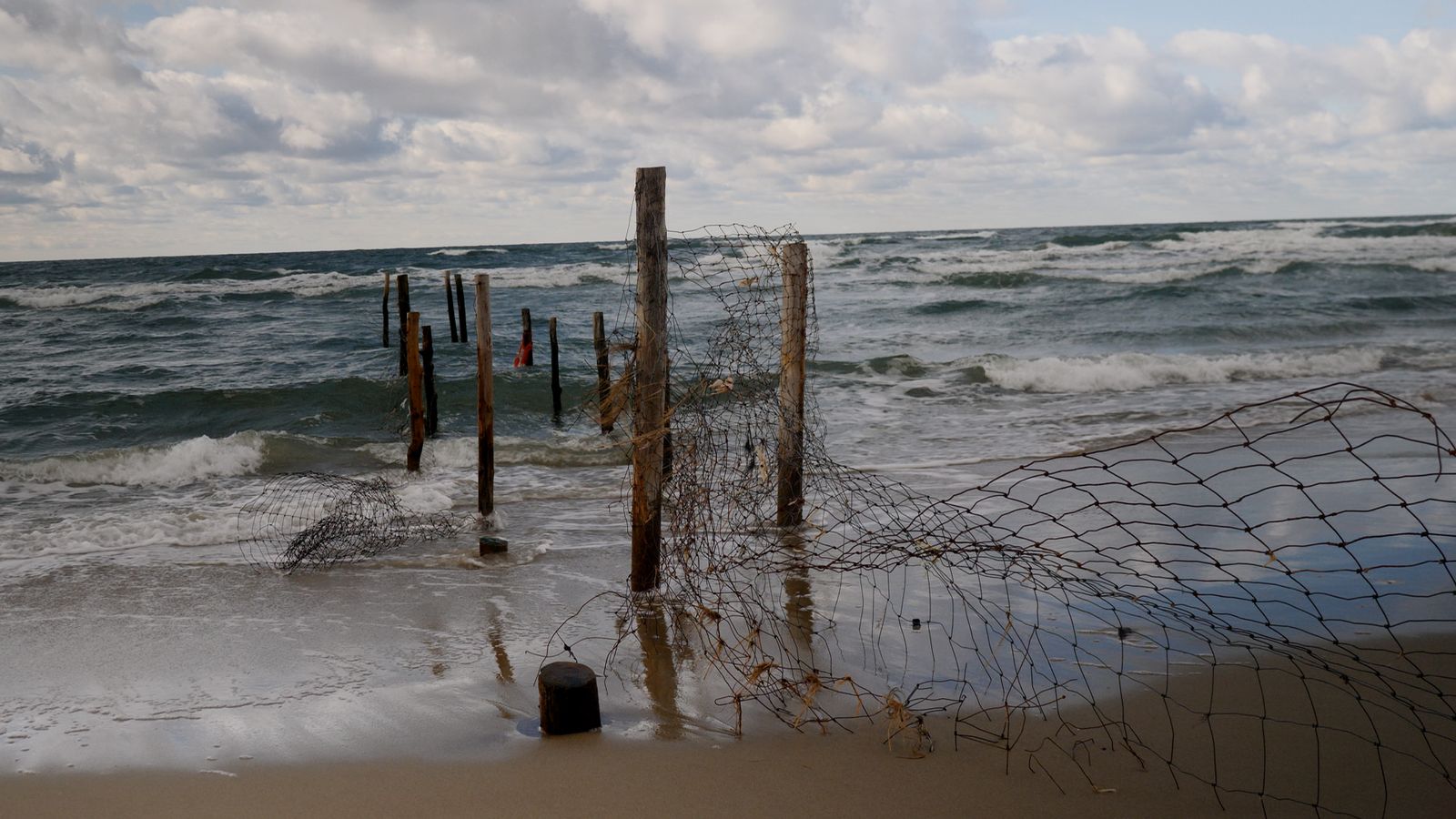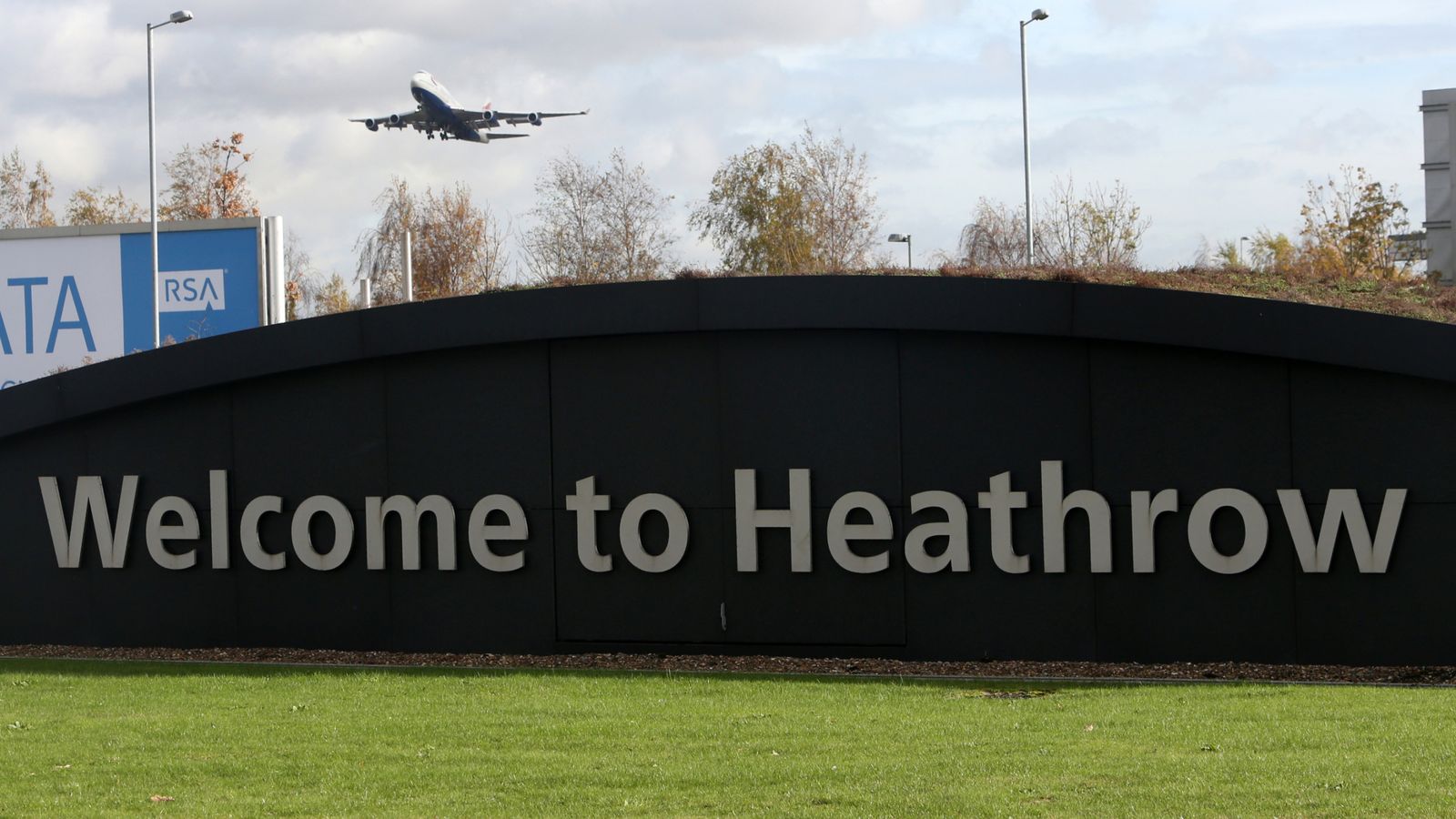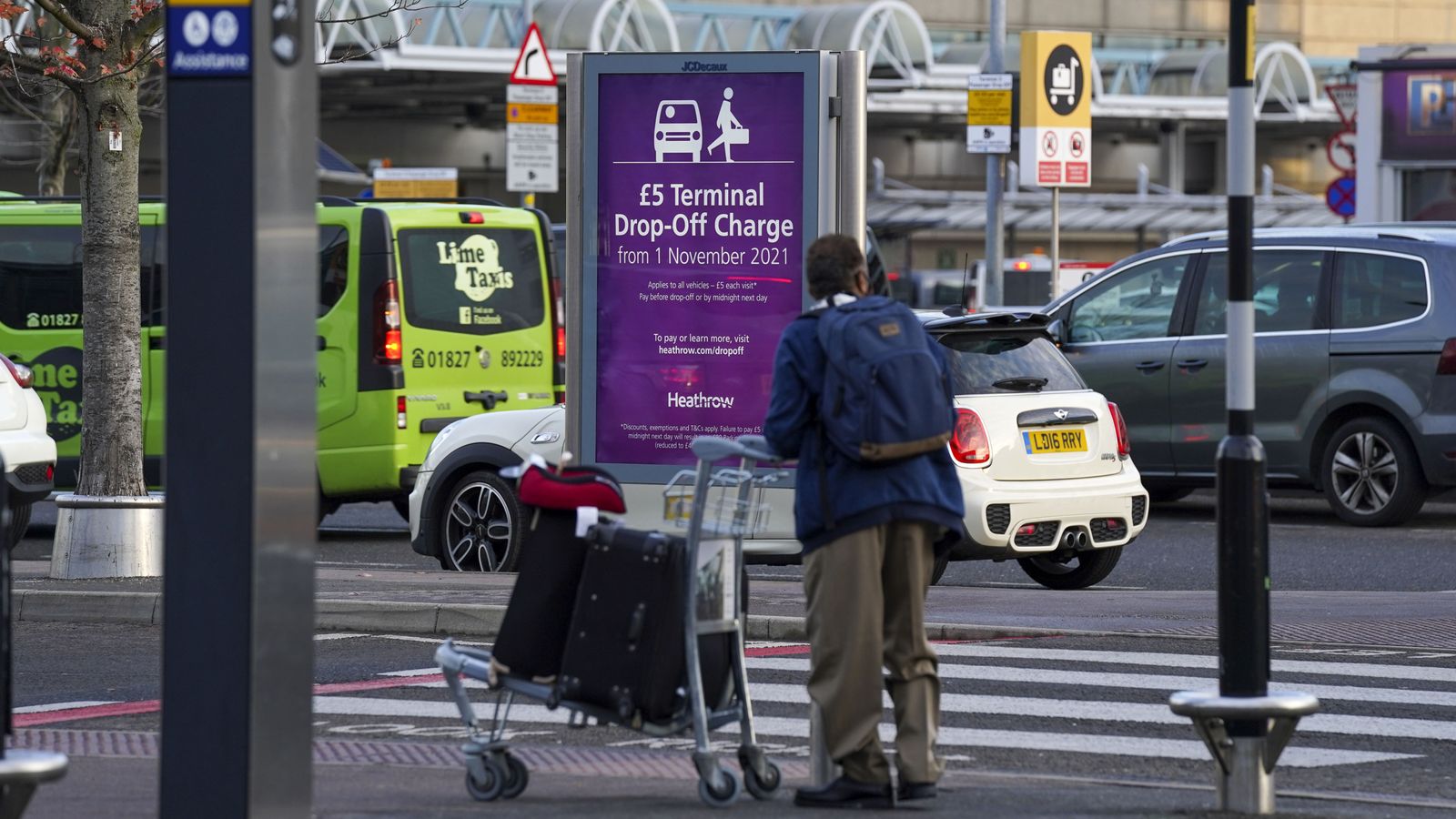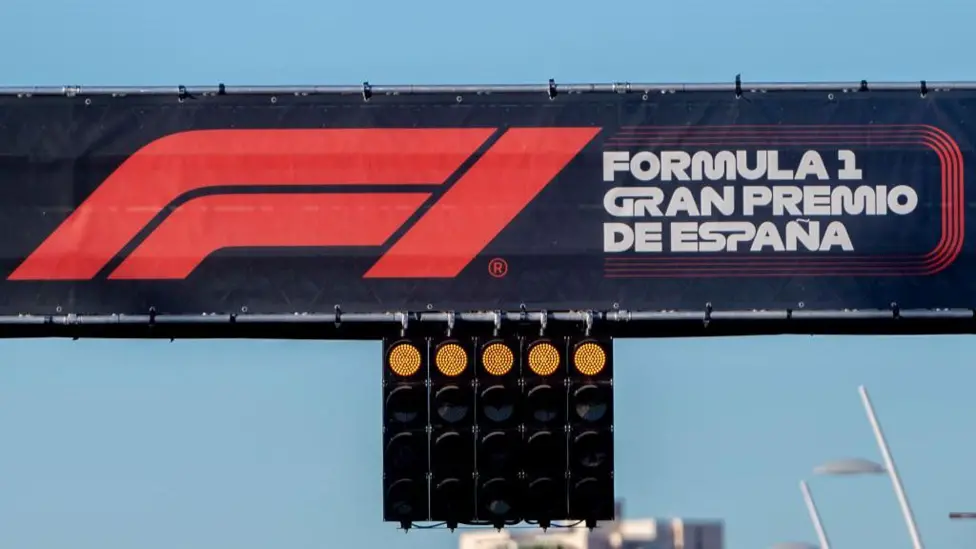Inside a NATO base in Poland - as residents bordering Russia say 'scare tactic' is needed
Along the thin strip of beach and woodland known as the Vistula Spit which marks the northernmost demarcation between Poland and the Russian exclave of Kaliningrad, there is not much in the way of a border.

Just some torn wire fencing and a few rotten posts which seem to stagger drunkenly into the shallows of the Baltic Sea.
Beneath a sign barring entry, we find a couple of empty bottles of Russian cognac and vodka.
It doesn't feel like the edge of NATO territory.
"I don't see much protection. It's not good," says Krzysztof from Katowice, who has come to inspect the border himself.
"We have to have some kind of scare tactic, something to show that we are trying to strengthen our army," says Grzegorz, who lives nearby.
"At the same time I think I would not base the defence of our country solely on our army. I am convinced that Europe or America, if anything were to happen, will help us 100%."
Poland is investing massively in its defence, with military spending set to hit 4.7% of GDP in 2025, more than any other NATO country.
Polish Prime Minister Donald Tusk has said he will introduce voluntary military training for men of any age, and women too should they wish, so the army has a competent reserve force in the event of war.
He is investing $2.5bn in stronger border fortifications between Russia and Belarus, a project called East Shield which will include anti-tank obstacles, bunkers and potentially minefields too.
Along with its Baltic neighbours, Poland is withdrawing from the Ottawa convention against the use of land mines. It hasn't committed to using them, but it wants to have that option.
We've been granted access to one of the cornerstones of Polish, and European defence, which is a couple of hours drive from the Vistula spit at the Redowicze military base.
Aegis Ashore Poland, together with its sister site in Romania, are the land-based arms of NATO's missile defence shield over Europe, which is run by the US navy.
They are symbols of the US commitment to NATO and to the protection of Europe.
And despite changes at the top of the Pentagon it is "business as usual", says Captain Michael Dwan who oversees air and missile defence within the US Sixth Fleet.
"Our mission to work with NATO forces has been unchanged. And so our commitment from the United States perspective and what capability we bring to ballistic missile defence and the defence of NATO is championed here in Poland."
As far as Russia is concerned, NATO's two missile defence bases in Romania and Poland represent a NATO threat on their doorstep and are therefore a "priority target for potential neutralisation", per Russia's foreign ministry.
NATO says the installations are purely defensive and their SM-3 interceptor missiles are not armed and are not intended to carry warheads. Russia counters they could easily be adapted to threaten Russia.
Not the case, Captain Dwan says.
"It's not a matter of moving offensive weapons here into the facility, the hardware and the infrastructure is simply not installed.
"It would take months or years to change the mission of this site and a significant amount of money and capability and design."
With so much marked "secret" on the site, it seems amazing to be granted the access.
But for NATO, transparency is part of deterrence. They want potential adversaries to know how sophisticated their radar and interception systems are.
They know that if they carried warheads on site, that would make them a target so they don't.
Deterrence also depends on whether potential adversaries believe in the US's commitment to NATO and to Europe's defence.
On an operational level, as far as the troops are concerned, that commitment may still be iron-clad.
But as far as its commander-in-chief goes, there is still - as with so much around Donald Trump's presidency - a great deal of uncertainty.
In the Oval Office on Wednesday afternoon President Trump suggested he might bundle a potential US troop drawdown in Europe together with the issue of EU trade and tariffs.
"Nice to wrap it up in one package," he said, "it's nice and clean".
Probably not the way Europe sees it, not with a resurgent Russia on their doorstep, economic tailwinds breeding animosity and the notion of Pax Americana crumbling at their feet.
-SKY NEWS







